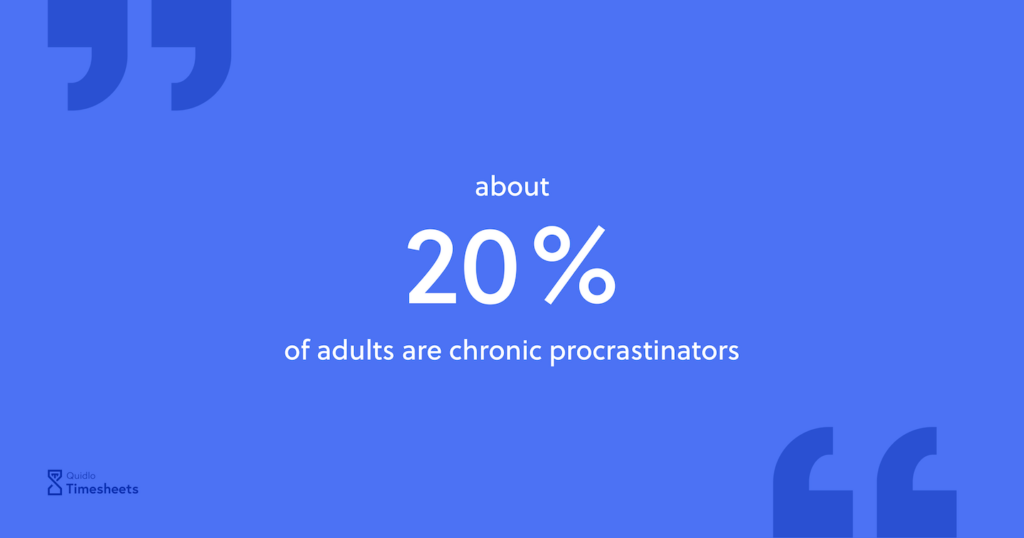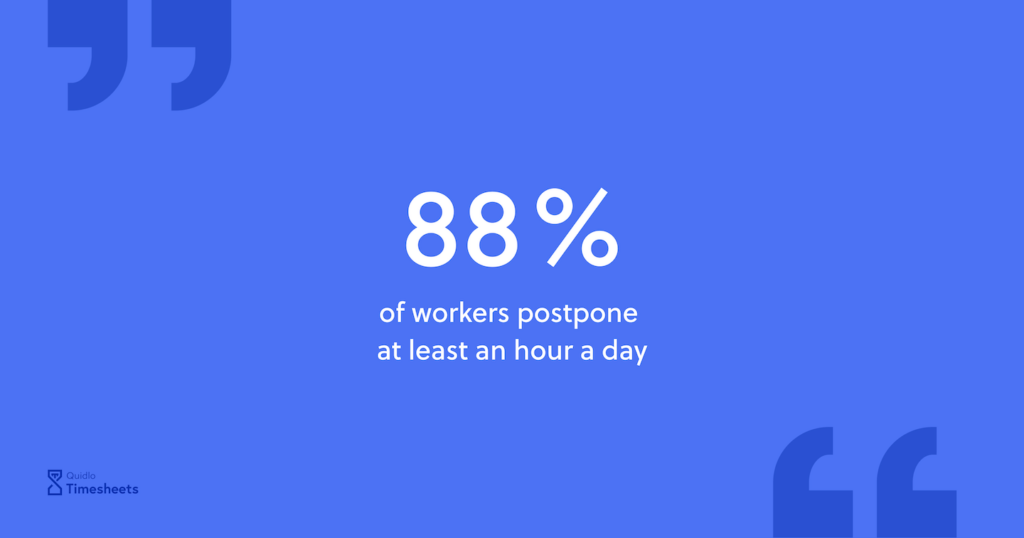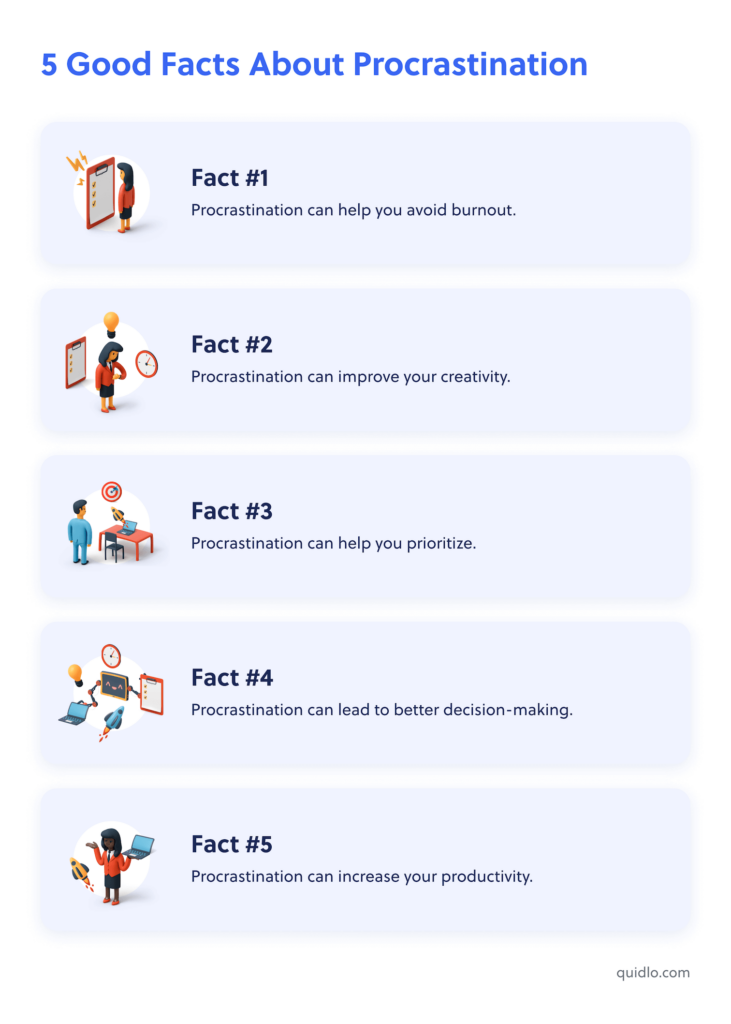Do you ever feel like you’re constantly battling against yourself? That no matter how hard you try, some little voice in the back of your head always seems to be saying, “just five more minutes,” until eventually, hours have passed, and you’ve done nothing productive. If so, then congrats!! You are a “ Procrastinator “. But don’t worry – you’re not alone.
Even the great artist, Leonardo da Vinci, was not immune to procrastination and its effects. Over the course of 16 years, da Vinci painstakingly worked on the painting, Mona Lisa, adding layer after layer of paint. However, he never truly completed the work, and it remains one of the most famous unfinished paintings in the world. The picture never reached its intended buyer, and Da Vinci never received payment for it.

According to Dr. Joseph Ferrari’s research, about 20% of adults are chronic procrastinators. But just because it’s common doesn’t mean it’s any less harmful. Procrastination can lead to feelings of stress and anxiety, and it can even negatively affect your health. So why do we do it, and why is it such a big deal? Keep reading to find out!
Table of Contents
Why do People Procrastinate?
Procrastination is a form of self-sabotage that allows us to rationalize our inaction. We tell ourselves that we’ll work on the project tomorrow, or that it’s not really that important, or that we don’t have the time right now. But the truth is, we’re just making excuses. We know deep down that we should be taking action, but we’re choosing not to because it’s easier not to.
Many people struggle with procrastination, or the tendency to put off important tasks. There are a variety of reasons why people might procrastinate, including feelings of anxiety or overwhelm, a lack of motivation, or simply bad habits. In some cases, procrastination can be a way of avoiding difficult tasks. In other cases, it may be a sign that someone is struggling to manage their time effectively. Whatever the reason, procrastination can have a negative impact on both personal and professional life. If left unchecked, it can lead to missed deadlines, decreased productivity, and increased stress levels.
Impact of Technology on Procrastination
It’s no secret that we live in a world that is increasingly reliant on technology. From the alarm that wakes us up in the morning to the phone that we use to stay connected with our loved ones, it’s hard to imagine life without our devices. Technology has had a major impact on society, and its role in procrastination is no exception. While there are many factors that contribute to procrastination in individuals, experts believe that technology is one of the main culprits. Here are five ways in which technology contributes to procrastination:
1. Social media: It’s hard to resist checking Facebook or Twitter when you’re supposed to be working on something else. Social media can be a huge distraction, and it’s easy to waste hours scrolling through your newsfeed when you should be focusing on something else.
2. Email: Checking email is another easy way to procrastinate. It’s easy to get sucked into reading and responding to messages, even if they’re not particularly important. And, of course, once you’ve checked email, it can be tough to resist checking other websites as well.
3. Games: Whether you’re playing an online game or downloaded one onto your phone, games can be addictive and time-consuming. It can be hard to stop playing once you’ve started, and before you know it, an hour has passed by without any real progress on whatever you were supposed to be working on.
4. News websites: Just like email, it can be tempting to check the news when you should be focusing on something else. However, unlike email, catching up on current events doesn’t typically have any immediate deadlines attached to it. As a result, it can be easy to spend far too much time reading articles or watching videos when you should be working on something else entirely.
5. YouTube: YouTube is another website that can easily lead to procrastination. After all, there’s an endless supply of videos to watch, and it’s all too easy to click from one video to the next without really accomplishing anything. What’s more, many videos are designed specifically to be highly shareable and attention-grabbing, which means they’re all the more likely to distract you from what you should be doing.
While technology has many benefits, it’s important to be aware of its potential drawbacks and use it in moderation. Otherwise, we may find ourselves falling victim to procrastination. Here are some statistics and facts worth considering. Statistics from a research conducted in 2001 on a diverse group (mean age = 29.4, standard deviation 12.0, 51.9% students, 42.5% employed, 3.6% unemployed):
- Half (50.7%) of the respondents said they frequently used the internet as a procrastination tool.
- Procrastination rates are high, with people spending on average 1.59 hours per day procrastinating.
- This procrastination is especially pronounced when it comes to internet use, with people spending, on average, 57% of their time online procrastinating.
- This tendency is especially strong when people are at home, where they spend on average 1.12 hours per day procrastinating.
- However, the trend also exists in other contexts, with people spending on average 0.26 hours per day procrastinating at school and 0.24 hours per day procrastinating at work.
Procrastination at Workplace
Workplace procrastination is a widespread problem, with an estimated one in five workers admitting to regularly delaying tasks they need to do. According to a survey of 2219 persons performed by Darius Foroux, 88% of workers postpone at least an hour a day. It further suggested that a person who makes $40,000 a year and procrastinates for three hours a day wastes $15,000.

For many people, procrastination at work is simply a way of coping with the stress of the job. However, it can also lead to problems such as missed deadlines, poor work quality, and conflict with co-workers. Procrastination usually starts when we feel overwhelmed by a task. Our brain tries to protect us from stress by distracting us with other activities. However, this only makes the problem worse, as the task looms larger in our minds and we become even more overwhelmed.
Workplace Procrastination Examples
We’ve all been there before. You’re at work, staring at a blank screen or an empty Word document, and you can’t seem to get started on that project that’s due in a few hours. Or maybe you’re avoiding a difficult conversation with your boss. Whatever the case may be, we’ve all experienced workplace procrastination at one point or another. Here are five common examples:
🙁 Checking personal email or social media
This is a common way to procrastinate, as it’s easy to get distracted by personal matters when you’re supposed to be working.
🙁 Working on low-priority tasks
It’s often easier to work on tasks that aren’t urgent, as they don’t require as much effort. However, this can lead to procrastination, as you’re not working on the most important tasks.
🙁 Putting off difficult tasks
Avoiding difficult tasks is a common form of procrastination. It’s often easier to work on simpler tasks, but this can leave the more difficult tasks undone.
🙁 Chatting with co-workers
Socializing with co-workers can be enjoyable, but it can also lead to procrastination if you chat for too long.
🙁 Taking lengthy breaks
Taking a few minutes here and there to take a break is fine, but if you’re taking excessively long breaks, it can interfere with your work and lead to procrastination.
Workplace Procrastination Facts
Though the core demographic that procrastinates are college and university students, this does not save people in professional settings from the procrastination bug. Following are a few interesting stats that people do not consider;
- 20% of men and women in the US are chronic procrastinators.
- Procrastination costs the average employee around $8,875 annually.
- If women’s procrastination levels were similar to men, there would be around 1.5 million fewer women in the workforce.
- Issues like anxiety, depression, ADHD, and low self-esteem may induce procrastination.
Impact of Procrastination on Businesses
Anyone who’s ever run a business knows that there’s always something that can be put off until later. Whether it’s filing paperwork, returning phone calls, or writing reports, there always seems to be something that can wait. This tendency to procrastinate is often referred to as “business procrastination.”
Many business owners are guilty of procrastination, especially when it comes to difficult or challenging decisions. While it may seem like a harmless way to avoid discomfort or stress in the short term, procrastination can ultimately have negative consequences for your business. It can lead to missed opportunities, lost productivity, and even financial loss.
A recent study of 10,000 U.S. employees polled, revealed that the average worker self-admitted to wasting 2.09 hours each day on non-job-related activities. Considering the average salaried employee makes $39,795, that means procrastination costs employers $10,396 per year – per employee. When broken down, that’s $52.50 wasted each day, $2.60 wasted each hour, and a staggering $0.04 wasted each minute. As businesses continue to face budget cuts and layoffs, they can no longer afford to lose such a large amount of money to employee procrastination.
According to a recent study by research firm Basex, “the cost of unnecessary interruptions” in terms of lost productivity and innovation is a staggering $650 billion. That’s nearly 1% of the entire world’s GDP! And it’s not just basex that has identified this problem. Merlin Mann, author of the popular blog 43 Folders, has long railed against the cost of email interruptions. The Guardian UK estimates that the little “ding” sound indicating a new message costs the U.S. economy $70 billion each year.
Procrastination is also a common trait among Americans, and tax season is often when this tendency leads to costly mistakes. The New York Times reported that, according to Piers Steel, an associate professor of human resources and organizational dynamics at the University of Calgary, the average American tax procrastinator paid an extra $400 because of rushing in 2002, resulting in $473 million in overpayments. This tendency to procrastinate can be costly in other ways as well. For example, people who put off saving for retirement may find that they have insufficient funds later in life. And those who procrastinate on home or car repairs may end up paying more in the long run as the problem worsens.
Start tracking time and know where your time goes
Quidlo Timesheets helps keep an eye on time spent on daily activites. No commitment or credit card required.


Procrastination of Students
Many students struggle with procrastination at some point in their academic careers. While it may seem like a harmless way to put off doing homework or studying for a test, procrastination can actually have serious consequences. When students put off schoolwork, they often find themselves feeling overwhelmed and stressed. This can lead to poor performance on assignments and exams, as well as lower grades overall. In addition, procrastination can also impact a student’s health, both mentally and physically. Chronic stress can lead to anxiety and depression, as well as problems with sleep and focus.
Why Do Students Procrastinate
Procrastination is a major problem for many students. It can interfere with schoolwork, cause stress and lead to poor grades. According to research conducted in 2015, last-minute submissions cost students an average of 5%, or 0.5 grade points. In some cases, it can even prevent students from completing their homework or studying for exams. Some students may procrastinate because they are overwhelmed by the amount of work that they have to do. Others may procrastinate because they don’t know how to start or don’t feel motivated.
Many students find that they procrastinate more in college than they did in high school. There are a number of reasons why this may be the case.
First, college students often have more freedom when it comes to managing their time. In high school, students may have a set schedule that they must follow. But in college, students typically have more control over when they attend classes, do homework, and study for exams. This can be both a blessing and a curse. While it allows students to tailor their schedules to fit their needs, it also means that there is more room for procrastination.
Second, college students may feel like they have less pressure to succeed. In high school, students may be competing with their classmates for grades and scholarships. But in college, students often feel like they are on their own. This lack of pressure can lead to procrastination, as students may feel like they can afford to wait until the last minute to start working on a project.
Third, college students may be more likely to experience anxiety or depression than high school students. These mental health problems can contribute to procrastination by making it difficult for students to focus on their work or get started on tasks. If you’re a student and struggling with procrastination, it’s important to identify the root cause of your problem. Once you know why you’re procrastinating, you can take steps to overcome it.
Students Procrastination Examples
Students are under a lot of pressure to succeed. They are juggling classes, jobs, and social lives, all while trying to figure out who they are and what they want to do with their lives. It’s no wonder that so many students find themselves struggling with procrastination. When there is so much to do, and so little time to do it, it can be tempting to put off assignments and tasks until the last minute.
However, procrastination can have a serious impact on college students. It can lead to lower grades, missed deadlines, and increased stress levels. In extreme cases, it can even lead to dropped classes or expulsion from school. Procrastination may seem like a harmless way to cope with the demands of college life, but it can actually have serious consequences. Here are five examples of procrastination that may be familiar to students:
- Putting off studying for a test until the night before. This can lead to Panic and a feeling of being unprepared.
- Not starting a research paper until the week it is due. This can result in a rushed and poorly-written paper.
- Waiting to do homework until after dinner. This often leads to staying up late and feeling tired the next day.
- Skipping class to sleep in or watch TV. This can cause students to fall behind in their work and miss important information.
- Procrastinating on job applications or school applications. This can result in missing opportunities or being disqualified from consideration altogether.
As these examples illustrate, procrastination can have serious consequences for students. It can lead to poor grades, missed deadlines, and lost opportunities. In some cases, it can even result in students having to repeat a course or take a semester off from school altogether. Clearly, then, it is important for students to learn how to manage their time and avoid procrastinating on their work.
Interesting Students Procrastination Facts and Statistics
It’s no secret that college students are notorious for putting off assignments until the last minute. But just how common is procrastination among students, and what are its consequences? Let’s find out!
- Around 80%-95% of college students, or roughly half of all students, procrastinate, and this trend looks to be increasing.
- In a recent study containing 323 undergraduate students, around 81% were seen as procrastinators. Only 19% of the students were not regularly procrastinating.
- One of the key areas of procrastination was noted to be presentations, with 68.7%.
- Exams were the second highest, with around 64.4% of students.
- Procrastination decreases with age, with people between 14 and 29 being the most vulnerable to it.
- Procrastination may be situational in some cases.
- Procrastination is higher in men than women and is linked with payscale.
- Procrastination is linked with a lower quality of life and psychological distress.
- There are links between procrastination and ADHD, OCD, and passive-aggressive tendencies, in some cases.
- Technology did not increase or decrease the rate of procrastination by a considerable margin, according to the APA. The issue is more about personal accountability.
- Procrastination is often rooted in anxiety and insecurities.
How Much Procrastination is Normal?
A common person wastes 218 minutes, or around 55 days per year, avoiding necessary work. This may seem like a lot, but it’s actually quite normal. In fact, procrastination is often considered to be a part of human nature. After all, we’re constantly making trade-offs between present and future rewards. When the rewards of taking action are far off in the future, it can be difficult to motivate ourselves to take action in the present. This is why procrastination is often seen as a form of self-sabotage.
The amount of procrastination that is considered normal varies depending on the group of people being examined. For example, it is generally accepted that students will procrastinate more than employees and that employees will procrastinate more than retirees. However, there is no definitive answer as to how much is considered “normal” for each group.
Some people may only procrastinate a little bit, while others may struggle with chronic procrastination. Ultimately, it is up to the individual to determine what level of procrastination is acceptable for them.
5 Good Facts About Procrastination
Many people see procrastination as a bad thing, but there are actually many situations when it can be helpful. Sometimes, the best way to get motivated is to procrastinate. By putting off a task until the last minute, you can give yourself a much-needed sense of urgency that can help you to focus and get the job done. Here are 5 good facts about procrastination:

👍 Fact #1. Procrastination can help you avoid burnout.
If you’re feeling overwhelmed by a project, it can be tempting to just power through and get it done as quickly as possible. However, this can often lead to burnout. Taking some time to procrastinate and relax can actually help you avoid this problem.
👍 Fact #2. Procrastination can improve your creativity.
When you’re under pressure, your brain often goes into “fight or flight” mode and becomes focused on solving the immediate problem at hand. However, this narrow focus can actually limit your creativity. By taking some time to procrastinate, you can give your brain a chance to relax and allow your creative juices to flow.
👍 Fact #3. Procrastination can help you prioritize.
It’s easy to fall into the trap of thinking that everything is equally important and that you need to do everything at once. However, this isn’t realistic or sustainable. When you start to feel overwhelmed, take a step back and ask yourself what’s really important. This will help you prioritize and focus on the things that are truly worth your time and energy.
👍 Fact #4. Procrastination can lead to better decision making.
When we’re under pressure, we often make rash decisions without taking the time to think them through properly. If you find yourself in this situation, it can be helpful to take a step back and give yourself some time to think things over before making a decision. This extra time will help ensure that you make the best decision possible.
👍 Fact #5. Procrastination can increase your productivity.
Contrary to popular belief, procrastination doesn’t always mean that you’re lazy or unmotivated. In fact, sometimes procrastinating can actually help you get more done. How? It allows you to take advantage of what’s known as the “Zeigarnik effect.” This phenomenon occurs when we start working on a task but don’t finish it, which actually increases our motivation to complete the task later on. So next time you find yourself putting off a project, remember that it could actually end up making you more productive in the long run!
Summary
Now that you know all about the different types of procrastination, it’s time to take a closer look at yourself and see which type best describes your behavior. If you find that you often put things off because you’re perfectionistic or afraid of failure, then it’s time to make some changes.
“How to Beat Procrastination: 7 Actionable Tips” is a perfect way to begin if you’re looking for advice on how to stop putting things off and start getting things done. By following these tips, you’ll be on your way to kicking procrastination to the curb. Remember, changing your behavior won’t happen overnight. But if you’re committed to making a change, it’s definitely possible to overcome your procrastination habit.







